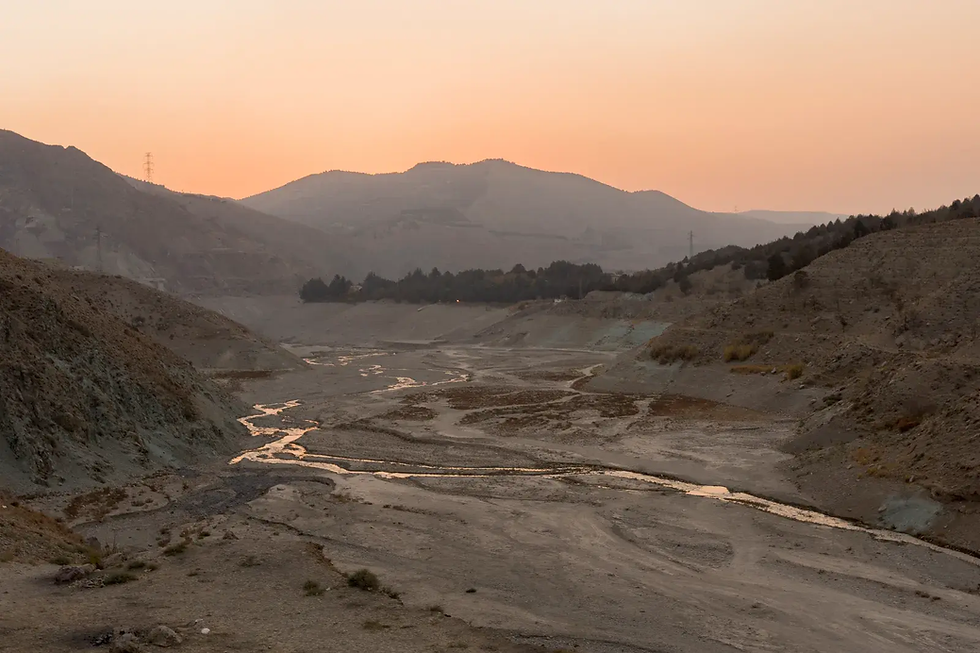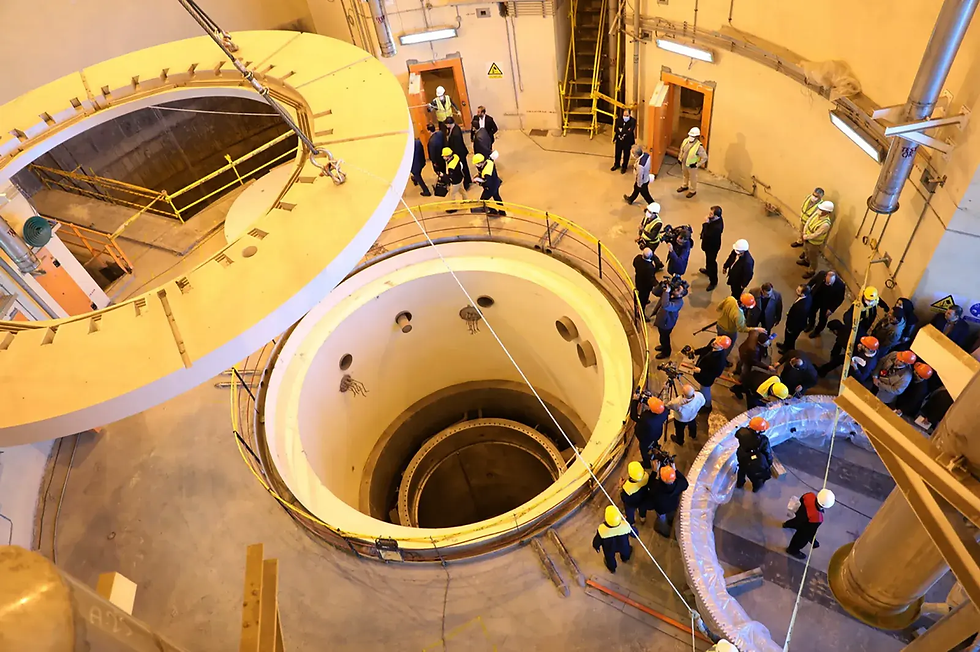
Newsweek
Nov 13, 2025
Water Crisis Threatens Iran’s Leaders
By Amir Daftari
Iran is facing its worst water crisis in decades, driven by unprecedented drought, decades of mismanaged resources, and aging infrastructure that leaks much of the supply before it reaches residents.
In Tehran, authorities warn that rolling water restrictions could escalate to a full evacuation if conditions do not improve, increasing the political pressure on the government and fueling public anger.
An elderly woman from north Tehran, who wished to remain anonymous, told Newsweek, “They are telling us to move from the city, but the whole country is suffering drought, so what's the point?”
Newsweek has contacted Iran's Foreign Ministry for comment.
Why It Matters
Water scarcity has become a critical test of the Iranian government’s ability to govern. Shrinking lakes and depleted dams have compounded the crisis, undermining agriculture, industry, and electricity production, while worsening inflation and unemployment.
Years of sanctions, corruption, and mismanagement have eroded the state’s capacity to provide essential services, turning natural resource depletion into a potent symbol of political failure.
For a country already battling economic hardship, international sanctions, and sporadic unrest, the collapse of its water reserves risks transforming local grievances into nationwide political pressure.
What To know
Iran’s worsening water crisis is putting immense political pressure on the government. Decades of mismanagement and corruption, combined with an unprecedented drought, have left millions struggling to access water, fueling protests across the country.
Speaking to Newsweek, Negar Mortazavi, senior fellow at the Center for International Policy and host of The Iran Podcast, said, “Domestic problems like a weakening economy, social and political pressure and environmental problems like water shortages are the root cause of mass protest that erupt time and again, and have created a legitimacy crisis for the state.”
This mounting pressure is reflected in the government’s increasingly urgent warnings. Last week, President Masoud Pezeshkian cautioned that Tehran may even need to be evacuated if conditions do not improve, saying, “If rationing doesn’t work, we may have to evacuate Tehran,” adding that water supply restrictions will begin next month if rainfall remains insufficient.
Residents are relying on containers and pumps to cope as anxiety rises, with a Tehran fitness trainer saying, “I’m buying up as much bottled water as I can.”

Impact on Nuclear Program
The worsening crisis is also putting industry and critical infrastructure at risk, not just daily life. Kaveh Madani, director of the United Nations University Institute for Water, Environment and Health, warns that the country’s deepening “water bankruptcy” threatens the operation of nuclear facilities.
“This water bankruptcy weakens Iran on the world stage,” Madani told Fox News Digital, adding, “If water and electricity shortages persist, any nuclear program would also be impacted.”
Nuclear plants rely on steady power and cooling, which are increasingly vulnerable as electricity and water supplies strain under the drought.
Shortages across the energy grid could also disrupt industrial activity that supports the nuclear sector, turning environmental scarcity into a direct threat to Iran’s national security and strategic position.
Policy Fractures in Tehran
Iranian officials remain divided over how to address the crisis. Some advocate large-scale projects such as desalination plants and modernization of irrigation systems to secure long-term water availability, while others resist reforms that could shift political power or redistribute resources.
The government’s internal divisions are compounded by deeper systemic issues. Mortazavi notes, “The Iranian state is facing serious problems, domestically, that are a result of decades of crippling sanctions, widespread corruption, and the mismanagement of resources.”
These longstanding challenges make it difficult for policymakers to implement structural reforms, leaving short-term measures as the primary tools for managing the crisis.

Growing Protests
While not yet widespread, protests over water shortages are growing across the country, with the latest occurring at Al-Zahra University in Tehran.
According to local reports, students held a demonstration Sunday evening in response to ongoing cuts and rationing in campus dormitories, chanting, “We are waiting for our rights, we’re not going anywhere, we’re staying right here.”
Water for showers is available only from 8 to 10 p.m., with supply shut off at other times. Officials briefly restored service after protests intensified, but shortages returned the following day.
A video circulating on social media purports to show the protests, capturing students lining up for bottled water and chanting for their rights.
What People Are Saying
Negar Mortazavi, senior fellow at the Center for International Policy and host of The Iran Podcast, told Newsweek: "Domestic grievances of Iranians have not been addressed by the government. Life has gotten harder over the years due to man-made and natural problems, and the state seems to be unable to resolve these issues."
What Happens Next
Iran’s water crisis is poised to deepen unless immediate and long-term solutions are implemented. While infrastructure reforms and better resource management are critical, the country also depends on rainfall to replenish reservoirs and rivers.
Without relief from the drought, shortages will intensify, further straining cities, rural communities, and critical industries, including the nuclear sector.
"Emerging protests may grow as daily hardships mount and public frustration increases. How the government addresses these environmental and political challenges—and whether rain comes in time—will determine Iran’s domestic stability and its ability to sustain international influence in the months ahead.
